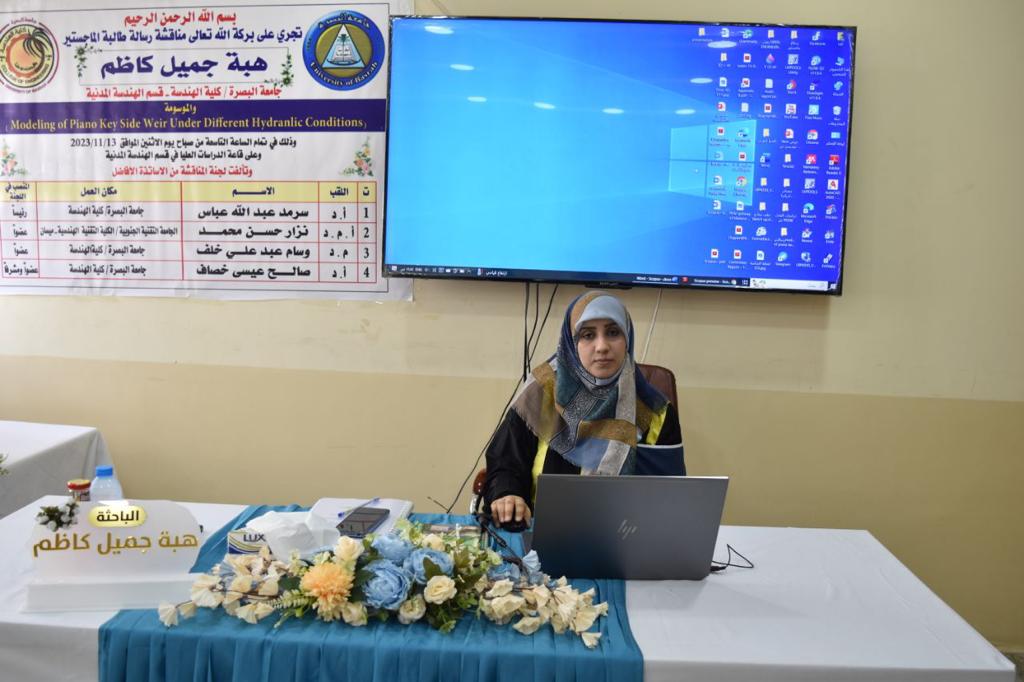A master’s thesis by the student Heba Jamil Kazem from the Department of Civil Engineering at the College of Engineering, University of Basra was discussed, entitled Modeling the weir of a side piano key under different hydraulic conditions.
The current study aims to find out how seven geometric factors affect the drainage coefficient under free-flowing conditions of the side piano key weir (PKSW) of both types B and C, by numerical testing using the Flow-3D program. This engineering information includes; Relative length means the ratio between the total developed length to the total width of the piano key side weir (L/W), key widths refer to the ratio between the width of the input keys to the width of the outlet keys (Wi/Wo), and the side weir base height refers to the ratio between the base height Weir and height of PKSW (Pd/P),
As well as the span length of the keys (the ratio between the span length of the keys to the total base length of the PKSW (Bi/B and Bo/B), and the height of the PKSW (the ratio between the length of the source and downstream and the height of the side weir of the piano key) (B/P), and the expansion at Outlet switch, stepped outlet switch for PKSW.
The results showed that the discharge coefficient of the side weir of the piano key was more affected by the variable (L/W) when the other information was constant. The coefficient of discharge (Cpw) changes about 20% for type B and about 16% for type C when L/W increases or decreases by (± 1).








